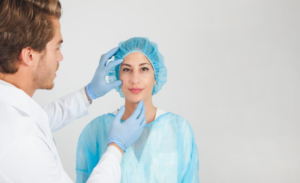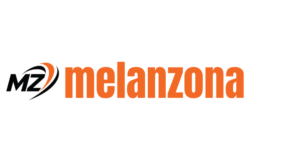 Are you unhappy with the way your nose looks? Do you wish you could change its size or shape? If so, you may be a candidate for rhinoplasty surgery. Rhinoplasty, commonly known as a nose job, is a procedure that involves reshaping the nose to improve its appearance and function. Whether you want to correct a bump on the bridge, reduce the size of the nostrils, or refine the tip, rhinoplasty can provide the solution you’ve sought.
Are you unhappy with the way your nose looks? Do you wish you could change its size or shape? If so, you may be a candidate for rhinoplasty surgery. Rhinoplasty, commonly known as a nose job, is a procedure that involves reshaping the nose to improve its appearance and function. Whether you want to correct a bump on the bridge, reduce the size of the nostrils, or refine the tip, rhinoplasty can provide the solution you’ve sought.
The Importance Of Considering Rhinoplasty
Rhinoplasty is a transformative procedure that addresses various concerns about the nose’s size, shape, and symmetry. Beyond enhancing aesthetics, it can also improve breathing and overall facial harmony. However, it’s crucial to approach the decision with realistic expectations and awareness of potential risks.
Consulting with a board-certified rhinoplasty surgery specialist is essential to assess candidacy and discuss desired outcomes. This ensures alignment between expectations and achievable results, empowering individuals to make informed decisions about their appearance and confidence.
Understanding The Different Types Of Rhinoplasty Procedures
Rhinoplasty offers customized solutions for various nasal concerns. There are two primary approaches: open and closed.
Open Rhinoplasty
This method involves an incision on the columella, offering better access for complex cases.
Closed Rhinoplasty
With incisions inside the nose, this approach suits minor modifications, resulting in less visible scarring and quicker recovery.
Rhinoplasty can also target changes like reduction, augmentation, ethnic alterations, or revisions. Consulting a qualified surgeon is crucial in determining the best approach for individual needs.
The Benefits Of Rhinoplasty Surgery
Rhinoplasty offers numerous benefits beyond cosmetic enhancement, including
- Improved Facial Harmony: By reshaping the nose to align with other facial features, rhinoplasty enhances overall facial proportions and symmetry, creating a more balanced appearance.
- Enhanced Self-Confidence: Addressing nose-related insecurities can boost self-esteem, positively impacting various aspects of life.
- Functional Improvements: Rhinoplasty can correct structural issues like a deviated septum, improve breathing and sleep quality, increase energy, and improve overall quality of life.
- Long-lasting Results: Once healed, rhinoplasty results are permanent, though it may take time for swelling to subside entirely and the outcome to emerge.
Rhinoplasty offers transformative benefits, both physically and emotionally. It allows one to achieve the desired nose and enhance well-being.
Preparing For A Rhinoplasty Procedure
Preparing for rhinoplasty involves careful planning and preparation to ensure a successful procedure and smooth recovery. Here’s how to get ready:
- Research and Consultation: Research plastic surgeons specializing in rhinoplasty and schedule consultations with them. During these consultations, discuss your goals, concerns, and expectations.
- Medical Evaluation: Your surgeon will evaluate your medical history, perform a physical examination, and order tests to ensure you’re a suitable candidate for rhinoplasty. Be honest about your medical history, including any allergies or medications you’re taking.
- Lifestyle Changes: Quit smoking and limit alcohol consumption before and after surgery, as these can interfere with healing. Your surgeon may also advise avoiding certain medications and supplements that increase bleeding.
- Arrange Support: Arrange for someone to drive you home after surgery and help you during the initial recovery days. Plan for time off work or school for proper rest and recovery.
- Mental Preparation: Understand the potential risks and benefits and manage your expectations. Visualize your desired outcome and communicate effectively with your surgeon.
By following these steps and working closely with your surgeon, you can physically and mentally prepare yourself for rhinoplasty and increase your chances of a successful outcome.
The Rhinoplasty Surgery Process Explained
The rhinoplasty surgery process involves several steps, from the initial consultation to the final post-operative appointments. Here is a breakdown of what you can expect during each stage, according to a rhinoplasty surgeon at Plano:
- Consultation: During the initial consultation, you will discuss your goals, concerns, and expectations with your plastic surgeon. They will evaluate your nose, facial structure, and overall health to determine whether you are suitable for rhinoplasty.
- Pre-operative Preparations: Once you have decided to proceed with rhinoplasty, your surgeon will provide detailed instructions on preparing for the surgery. This may include quitting smoking, avoiding certain medications, and arranging for someone to drive you home after the procedure.
- Anesthesia: On the day of the surgery, you will be administered either general anesthesia or intravenous sedation, depending on the specifics of your case and the surgeon’s recommendation. General anesthesia ensures that you are completely unconscious throughout the procedure, while intravenous sedation allows you to remain relaxed and pain-free.
- Incisions and Reshaping: Depending on the chosen approach (open or closed rhinoplasty), the surgeon will make incisions either externally or internally. They will then carefully reshape the underlying bone and cartilage to achieve the desired changes in the nose’s appearance.
- Closure and Dressing: Once the necessary modifications have been made, the surgeon will close the incisions using dissolvable sutures or removable stitches. A splint or cast may be applied to the nose to support the newly reshaped structure and protect it during the initial healing period.
- Post-operative Care: After the surgery, you will be monitored in a recovery area until the effects of anesthesia wear off. You may experience discomfort, swelling, and bruising, which can be managed with prescribed pain medications and cold compresses. Following your surgeon’s post-operative instructions is important, including keeping your head elevated, avoiding strenuous activities, and attending follow-up appointments.
Recovering From Rhinoplasty: What To Expect
Recovery from Rhinoplasty involves several phases, each requiring patience and adherence to post-operative care instructions:
- Immediate Post-operative Period: In the days following surgery, expect swelling, bruising, and discomfort. Pain medications may be prescribed, and cold compresses can help reduce swelling. Nasal packing, if used, is usually removed within a few days to improve breathing.
- First Week: Rest is crucial during this time, avoiding strenuous activities. Swelling and bruising will gradually diminish, though some may persist. Saline sprays or rinses may be recommended to keep nasal passages moist and aid healing.
- Second Week to a Month: Appearance improvements become noticeable as swelling decreases. However, the final results may take months. Returning to work or school may be possible, but caution is necessary to prevent nose injury.
- Long-term Healing: Final results become apparent over several months. Follow-up appointments with your surgeon are essential to monitor progress and address concerns. Protecting the nose from sun exposure and avoiding trauma is crucial during this time.
Remember, recovery experiences vary; your surgeon will provide personalized instructions to ensure optimal results.
